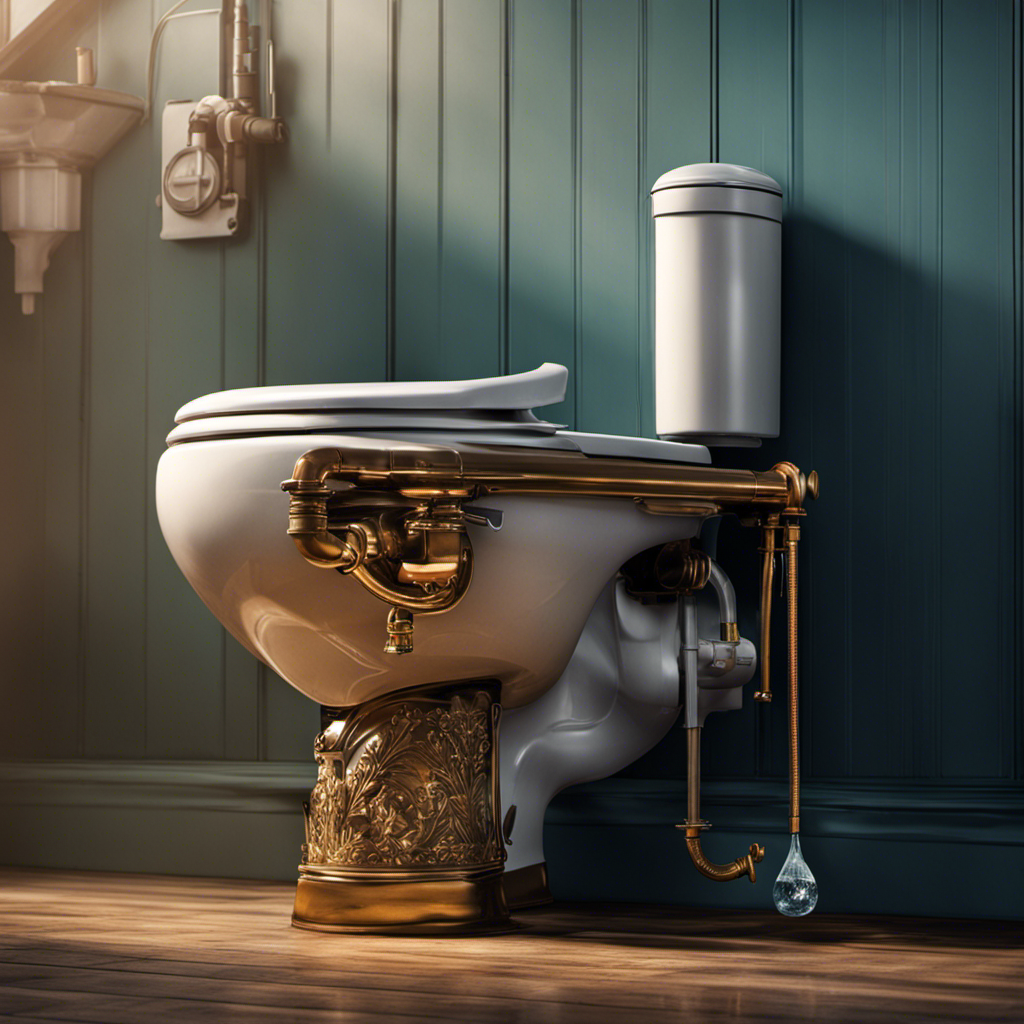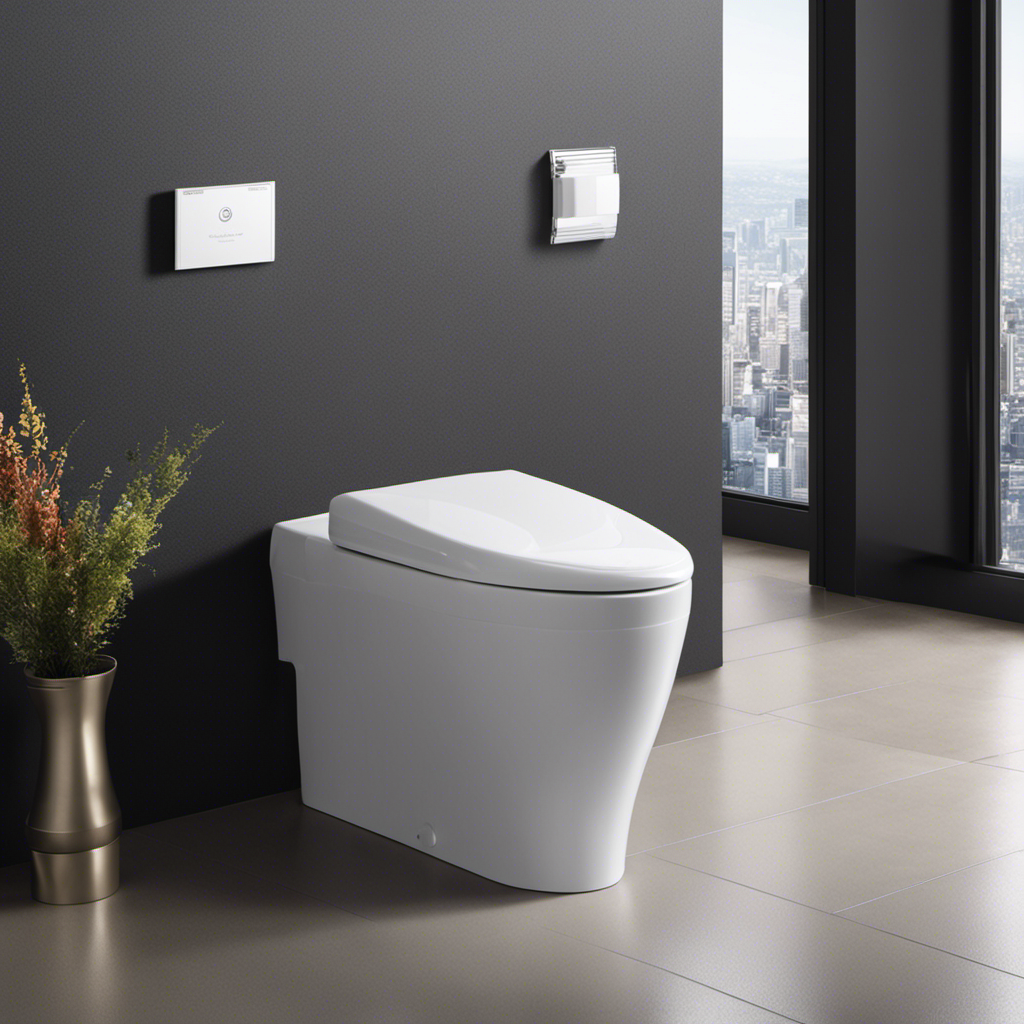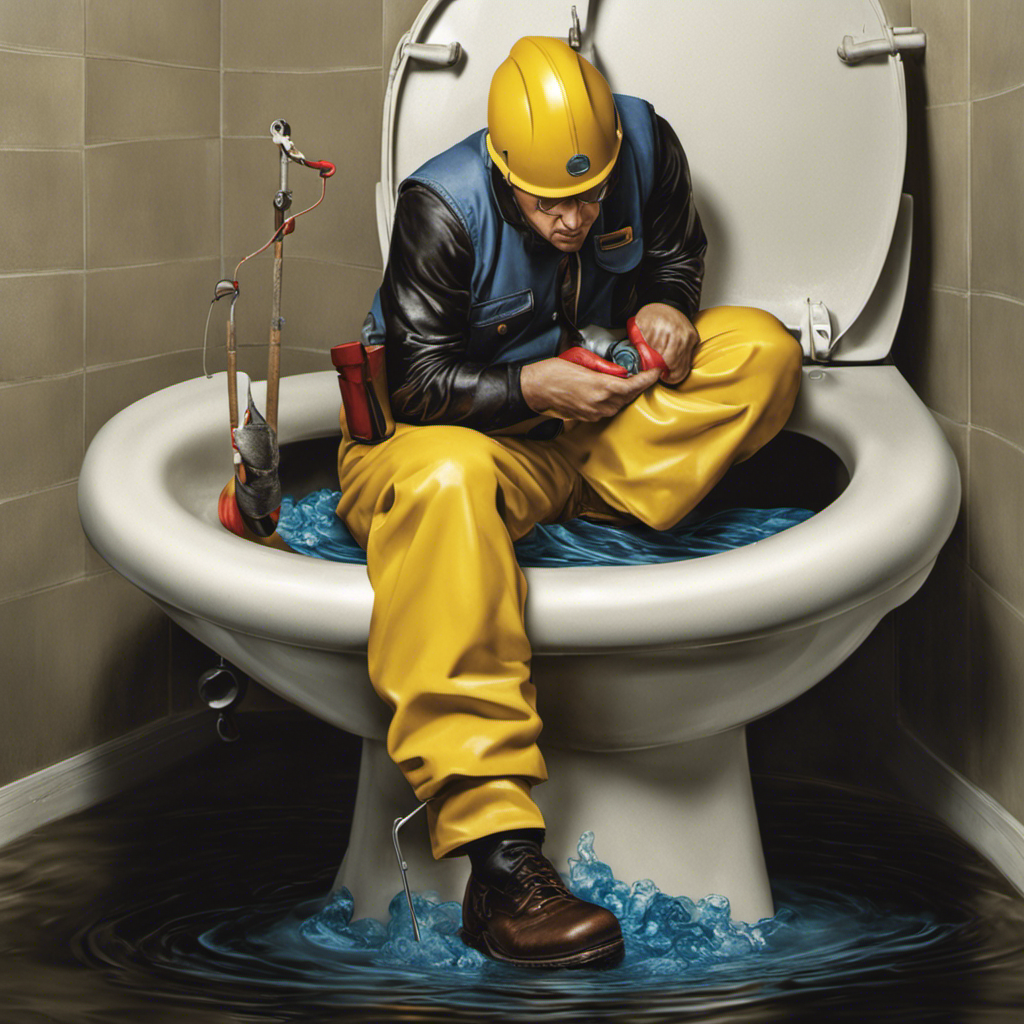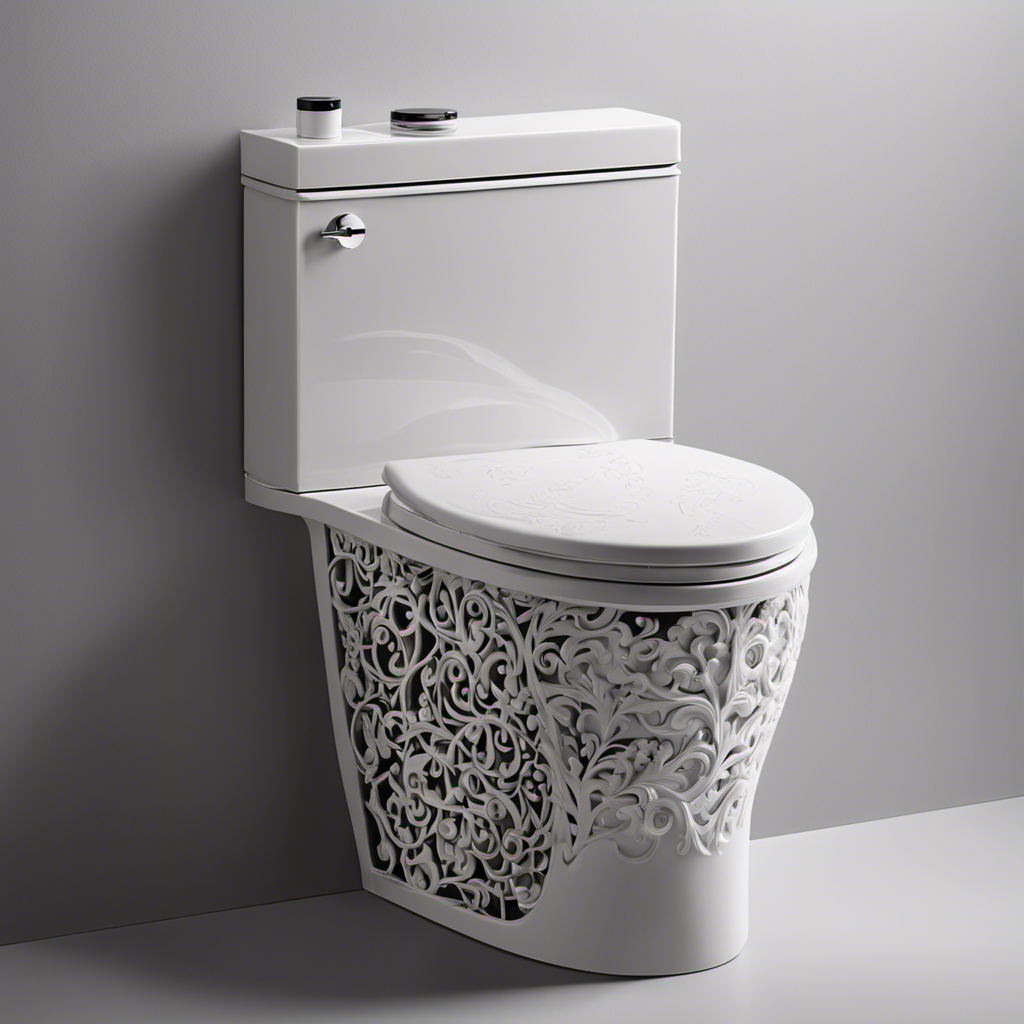Ever wondered why your toilet keeps running, seemingly on its own? It can be quite frustrating, not to mention wasteful.
Well, fear not, because I have the answers you’re looking for. In this article, I’ll delve into the common causes of a running toilet and shed light on the likely culprits.
From a faulty flapper valve to issues with the float and overfill tube, I’ll explain it all.
So, let’s dive in and discover how to fix this persistent problem once and for all.
Key Takeaways
- A faulty flapper valve or incorrect float adjustment are common causes of a running toilet.
- Troubleshoot the float valve before replacing the flapper valve.
- Regularly inspect and replace the flapper valve if necessary.
- Address float issues, maintain the overfill tube, and fix fill valve malfunctions to prevent a running toilet and conserve water.
Common Causes of a Running Toilet
One of the most common causes of a running toilet is a faulty flapper. The toilet flapper is a rubber valve that controls the flow of water from the tank into the bowl. When it becomes worn or damaged, it can no longer create a watertight seal, causing water to continuously leak into the bowl. This constant flow of water leads to a running toilet.
Another common culprit is an incorrect float adjustment. The float is a ball or cup that floats on top of the water in the tank. It is connected to the fill valve and controls the water level in the tank. If the float is set too high, the water will overflow into the overflow tube, causing the toilet to run.
Checking and replacing the flapper and adjusting the float can often solve the problem of a running toilet.
Faulty Flapper Valve: A Likely Culprit
To fix a toilet that keeps running, you’ll likely need to replace the faulty flapper valve. The flapper valve is a crucial component that controls the flow of water from the tank to the bowl. If it becomes worn or damaged, it can result in continuous water leakage and a running toilet.
Here are some key points to consider:
-
Float valve troubleshooting: Before replacing the flapper valve, check the float valve to ensure it is functioning properly. Adjust the float arm or clean any debris that may be affecting its operation.
-
Flapper valve replacement: To replace the flapper valve, turn off the water supply to the toilet and flush to drain the tank. Remove the old flapper valve by disconnecting it from the chain. Install the new flapper valve and adjust the chain length for proper operation.
-
Regular maintenance: To prevent future issues, periodically inspect the flapper valve for signs of wear and tear. Replace it if necessary and ensure the chain is properly adjusted.
The Role of the Float in a Running Toilet
The role of the float in a running toilet is to control the water level in the tank. The float is a small, buoyant device that rises and falls with the water level. When the water level drops after a flush, the float drops with it, signaling the fill valve to release more water until the tank is full again. However, if the float is not adjusted properly or is experiencing problems, it can lead to a running toilet. Troubleshooting float problems often involves adjusting the float to ensure it is sitting at the correct height. This can be done by bending the metal rod or adjusting the float arm. By addressing float issues, you can effectively stop your toilet from running and conserve water.
| Common Float Problems | Possible Solutions |
|---|---|
| Float is too high | Bend the metal rod downward to lower the float |
| Float is too low | Bend the metal rod upward to raise the float |
| Float is stuck or damaged | Replace the float with a new one |
Overfill Tube Issues: Why Your Toilet Keeps Running
When the overfill tube is not functioning properly, it can cause your toilet to continuously run. This tube is an important component of your toilet’s flushing system, as it helps prevent the tank from overflowing. If you are experiencing a running toilet, it could be due to a malfunctioning overfill tube.
To troubleshoot and maintain your overfill tube, consider the following:
-
Check for blockages: Debris or mineral buildup can clog the overfill tube, causing it to malfunction. Use a small brush or wire to remove any obstructions.
-
Adjust the water level: If the water level in the tank is too high, it can cause the overfill tube to constantly release water. Adjust the float or the fill valve to regulate the water level.
-
Replace worn components: Over time, the overfill tube or its associated parts may wear out or become damaged. Replace any faulty components to ensure proper functioning.
Understanding the Fill Valve: A Possible Source of the Problem
I’ve noticed that many people have issues with their toilets constantly running, even when not flushed.
In my experience, one possible source of this problem is a malfunctioning fill valve. Fill valves are responsible for controlling the flow of water into the toilet tank, and when they malfunction, they can lead to water leakage and wastage.
It’s important to understand how fill valves work and how to identify and fix any potential issues to prevent further water leakage.
Fill Valve Malfunctions
To fix a running toilet, you’ll need to check if the fill valve is malfunctioning. The fill valve is responsible for controlling the flow of water into the toilet tank after each flush. If it malfunctions, it can cause continuous water flow, leading to toilet water wastage and an increased water bill. Here are three common fill valve malfunctions that can contribute to this problem:
- Stuck Open: The fill valve fails to close completely, causing water to continuously flow into the tank.
- Leaky Seal: The seal around the fill valve deteriorates over time, resulting in water leakage.
- Clogged Valve: Debris or mineral deposits can accumulate in the fill valve, obstructing its proper functioning.
Addressing these issues promptly is crucial to prevent further water wastage and potential damage to the toilet system.
Now, let’s explore the potential for water leakage in the next section.
Water Leakage Potential
The water leakage potential in a running toilet can be caused by various factors. One of these factors is a faulty fill valve or a deteriorated seal.
When the fill valve fails to close completely, the water continues to flow into the toilet tank. This leads to constant running, resulting in wasted water and increased water bills.
Another potential cause of water leakage is a deteriorated seal. This can occur between the tank and the bowl or within the flush valve assembly.
These seals can wear out over time due to constant exposure to water pressure and chemicals in the toilet tank.
Regular maintenance and inspection of these components can help identify and prevent water leakage in a running toilet.
How to Fix a Running Toilet: Step-by-Step Guide
As a professional plumber, I’ve encountered many cases of running toilets and understand the frustration they can cause.
In this discussion, I’ll address the causes of toilet running and provide troubleshooting tips for common issues.
I’ll also outline the step-by-step process to fix a running toilet.
Causes of Toilet Running
Check if the flapper valve in your toilet tank is properly sealing. This is a common cause of a running toilet. The flapper valve is responsible for releasing water into the bowl when you flush and then sealing the tank to prevent any further water from flowing. If it is not sealing properly, water will continuously leak into the bowl, causing the toilet to run.
There are several reasons why a flapper valve may not seal properly:
- The flapper valve may be worn or damaged, preventing it from creating a tight seal.
- The chain connecting the flapper valve to the flush handle may be too loose or too tight, affecting the valve’s ability to seal.
- The water level in the tank may be too high, causing the water to continuously flow into the overflow tube.
Troubleshooting Common Issues
To troubleshoot common issues with your toilet, start by checking the flapper valve and the chain connecting it to the flush handle. The flapper valve is responsible for sealing the toilet tank and preventing water from continuously flowing into the bowl. If the flapper valve is worn out or not properly aligned, it can cause your toilet to run without being flushed.
Additionally, inspect the chain to ensure it is properly connected and not too loose or too tight. Water supply problems can also contribute to a running toilet. Check the water supply line to make sure it is fully open and not clogged.
If you notice any cracks in the toilet bowl, they may be causing a leak, leading to constant running. In such cases, it is best to contact a professional plumber for repairs.
Steps to Fix Toilet
Make sure you inspect the flapper valve and the chain to ensure they are properly aligned and connected, as they can cause your toilet to run constantly. If the flapper valve is not sealing properly, water can leak from the toilet tank into the bowl, resulting in continuous running. To fix this issue, you can adjust the position of the flapper valve or replace it if necessary.
Additionally, check the water supply to the toilet tank. If the water level is too high, it can overflow into the overflow tube and cause the toilet to run. You can adjust the water level by adjusting the fill valve or replacing it if needed.
Lastly, check for any leaks or cracks in the toilet tank that could be causing water to continuously flow into the bowl.
Frequently Asked Questions
How Much Water Is Wasted by a Running Toilet?
Running toilets can waste a significant amount of water, contributing to water conservation concerns and environmental impact. It is important to address the issue promptly to prevent unnecessary water loss and promote sustainable practices.
Can a Running Toilet Cause Damage to My Bathroom?
A running toilet can potentially cause damage to your bathroom if left unchecked. It is important to address this issue promptly to prevent water damage and high utility bills. Plumbing solutions can help with bathroom maintenance.
Is It Possible to Fix a Running Toilet Without Professional Help?
Of course! Fixing a running toilet without professional help is a piece of cake. Just follow some DIY solutions to tackle common causes like a faulty flapper or a stuck float.
Are There Any Health Risks Associated With a Running Toilet?
There can be health effects associated with a running toilet if it leads to mold growth or water damage. Regular toilet maintenance, such as fixing leaks, can help prevent these issues and keep your bathroom safe.
Can a Running Toilet Lead to Higher Water Bills?
Yes, a running toilet can definitely lead to higher water bills. It’s like having a leaky faucet that never stops dripping. By reducing water consumption and troubleshooting common toilet problems, you can save money and conserve water.
Conclusion
In conclusion, a running toilet can be a frustrating and wasteful problem to deal with. By understanding the common causes and components involved, such as the faulty flapper valve, float, overfill tube, and fill valve, you can easily diagnose and fix the issue yourself.
Did you know that a running toilet can waste up to 200 gallons of water per day? That’s equivalent to flushing your toilet over 50 times!
It’s important to address this issue promptly to conserve water and avoid unnecessary expenses.










